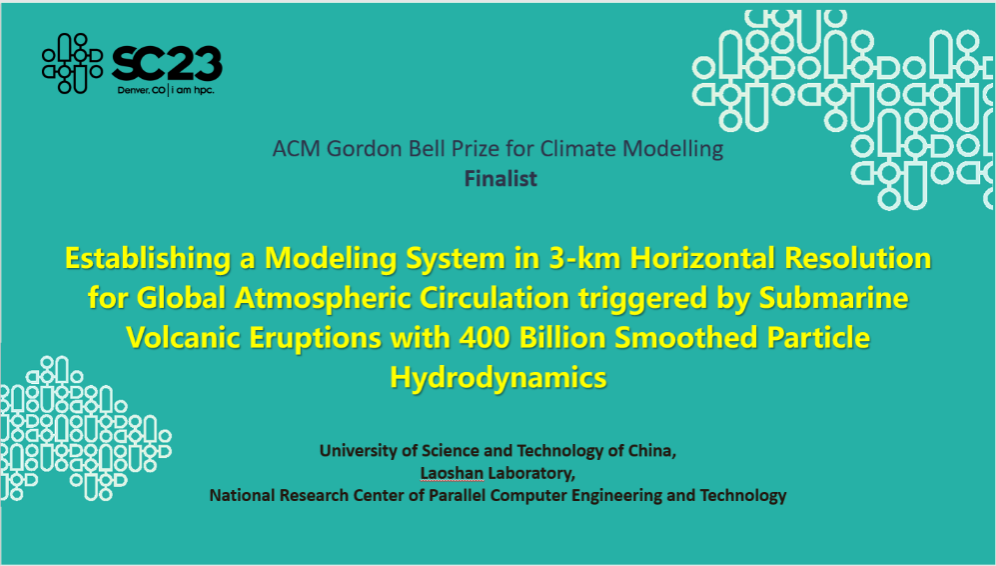USTC Realized Large-Scale Simulation of Earth System Cross-Layer Interactions on the New Generation Shenwei Supercomputer
The Association for Computing Machinery (ACM) in the United States has announced the list of research work nominated for the inaugural ACM Gordon Bell Prize for Climate Modeling. The research results the University of Science and Technology of China (USTC) of the Chinese Academy of Sciences (CAS), titled “Establishing a Modeling System in 3-km Horizontal Resolution for Global Atmospheric Circulation Triggered by Submarine Volcanic Eruptions with 400 Billion Smoothed Particle Hydrodynamics,” have received a nomination.

The finalist of Gordon Bell Climate Modeling Award (Image by ACM)
Hailed as the “Nobel Prize of Supercomputing,” the Gordon Bell Prize for Climate Modeling is awarded annually to recognize research teams that have achieved outstanding work in the field of high-performance computing during that year. The awarded work could contribute to a better understanding of the consequences of climate change while showcasing pioneering scientific research conducted by dedicated researchers addressing this significant global challenge.
Climate change, caused by both natural and human activities, poses a serious challenge to our planet. However, current research on simulation and prediction systems for earthquakes, volcanoes, oceans, and the atmosphere remains relatively independent. Moreover, due to insufficient numerical modeling methods and computational capabilities, a coupled simulation system for multilayers has not yet been established.

Schematic illustration of the dramatic changes and interactions of the lithosphere, hydrosphere, atmosphere, biosphere, etc., triggered by volcanic eruptions on the seabed (Image by USTC)
In this study, the SPH/iAMAS software is independently designed by combining smoothed particle hydrodynamics (SPH) and the integrated Atmospheric Model Across Scales (iAMAS) for high-resolution atmospheric physics and chemistry. This establishes a simulation system for volcanic eruptions and atmospheric circulation across various layers. The system simulates the entire process of a Tonga submarine volcanic eruption and atmospheric circulation in a 100 km x 100 km x 60 km area using 39 billion processor cores on the new generation of the Shenwei supercomputer. The researchers thus captured the eruption from shock waves, earthquakes, tsunamis, and mushroom clouds to the dispersion of ash and water vapor movements over the following 6-7 days. The system provided initial insights into the effects of the interactions between seismic activity generated by the eruption and simultaneous oceanic and atmospheric phenomena in full coupling.
John Taylor, chair of the committee for the inaugural Gordon Bell Climate Modeling Award, concluded that the study marks a major breakthrough in studying the interactions of geotectonic processes with climate change. It also provides a means of developing simulations and early warning systems to respond to similar global natural hazard events in the future.

